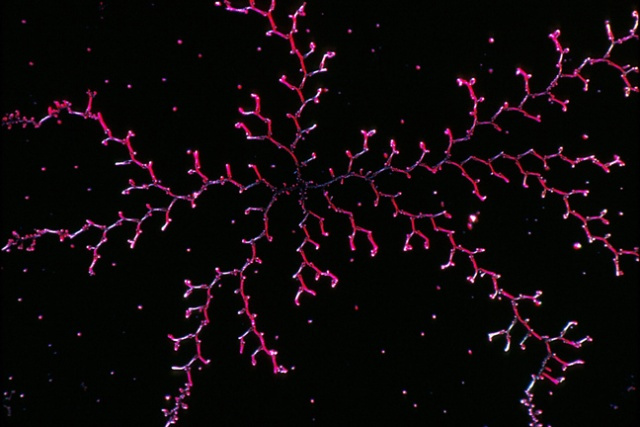
Cisplatin crystals. Source: National Cancer Institute. Photographer: Larry Ostby
Are all chemotherapies created equal? Researchers in the laboratories of KI members Michael Hemann and Stephen Lippard analyzed the mechanisms of action of three common platinum-based chemotherapeutics and discovered that drugs that were thought to act similarly actually kill cells in very different ways.
Cisplatin and carboplatin are often used to treat breast and lung cancer, while oxaliplatin is almost exclusively used to treat colorectal and GI cancers. Carboplatin and oxaliplatin are cisplatin derivatives, developed in response to cisplatin-induced side effects and the emergence of resistance to cisplatin treatment. The newer drugs come with different side effects and, as noted, are used to treat different cancer types, yet their precise mechanism of action remained unclear.
Intrigued, the researchers decided to investigate the mechanisms of action behind these three platinum-based treatments. They found that while cisplatin and carboplatin kill cells by damaging their DNA, oxaliplatin acts through a fundamentally distinct mechanism of action: it induces ribosomal biogenesis stress, impeding cells' ability to synthesize proteins, which is essential for growth and cell division.
The distinction, described in Nature Medicine, suggests that our current arsenal of anti-cancer agents are not generic killers, but rather, can be targeted towards specific cancer alterations to achieve optimal results. It also represents a significant advancement in understanding how different platinum-based drugs work, opening up new avenues for treatment selection based not just on toxicity, but also efficacy.
This work was supported in part by the Koch Institute Frontier Research Program through the through the Michael (1957) and Inara Erdei Fund and the Kathy and Curt Marble Cancer Research Fund, and a Misrock Postdoctoral Fellowship.